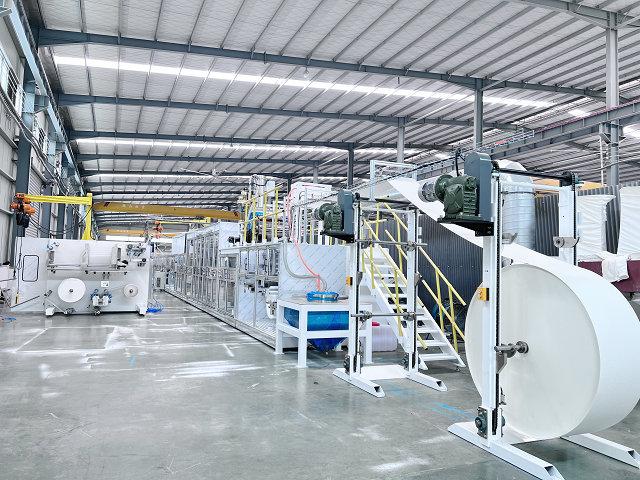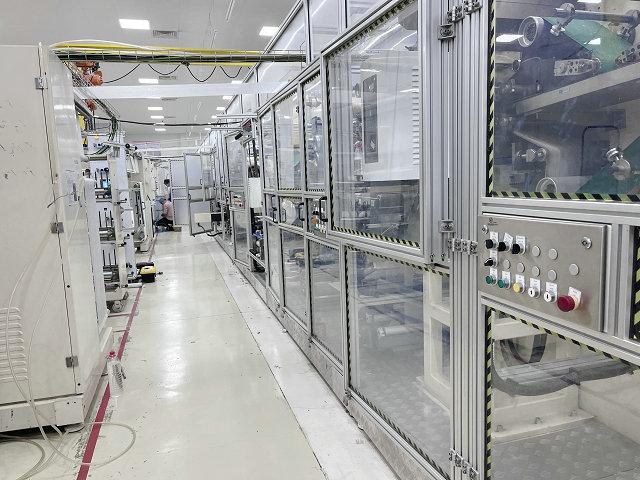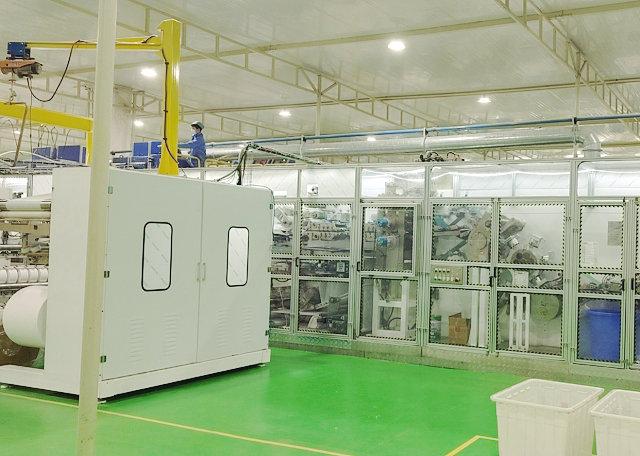Author:Haina Machinery Factory FROM:Diaper Machinery Manufacturer TIME:2024-11-15
Regular maintenance of a sanitary pads machine is essential for ensuring consistent production quality, maximizing efficiency, and extending the lifespan of the equipment. Proper maintenance not only prevents costly breakdowns but also ensures that the final product meets health and safety standards. This article will guide you through the steps necessary for performing regular maintenance on a sanitary pads machine, covering key areas such as cleaning, inspection, lubrication, and troubleshooting.

Regular maintenance is critical in any manufacturing environment, especially in facilities producing sanitary products. These machines operate under high speeds and stress, which can lead to wear and tear over time. By implementing a structured maintenance schedule, operators can identify potential issues before they escalate, thereby reducing downtime and increasing production efficiency. Additionally, maintaining hygiene standards is paramount in the production of sanitary pads, making regular checks indispensable.
Daily cleaning of the sanitary pads machine should be one of the first tasks performed at the start of each shift. It involves wiping down surfaces to remove dust, debris, and any remnants of raw materials. Key components to focus on include the feeding area, cutting blades, and the packaging section. Using appropriate cleaning agents that are compatible with the machine material helps prevent corrosion or damage. Also, special attention should be given to the areas where raw materials enter the machine to ensure no contaminants are present.
Conducting routine inspections is vital for identifying wear and tear on critical machine parts. Operators should develop a checklist that covers all major components, including motors, belts, and sensors. Check for signs of abnormal wear, such as fraying belts or loose fittings. Additionally, inspect electrical connections for signs of wear or corrosion. A thorough inspection can catch small issues before they become significant problems, saving time and resources in the long run.
Lubrication is essential for reducing friction between moving parts, which can lead to overheating and premature failure. It is important to follow the manufacturer's guidelines regarding the type and frequency of lubrication. Typically, certain parts need to be lubricated daily, while others may require weekly or monthly attention. Ensure that the lubricant used is suitable for the operating conditions of the machine, as inappropriate lubricants can cause more harm than good.

Calibration of the machine is another crucial aspect of maintenance. Regular calibration ensures that the machine produces sanitary pads to the specified dimensions and weight. This not only affects product quality but also compliance with regulatory standards. Operators should follow the manufacturer's calibration procedures, which may involve measuring sample outputs and adjusting settings accordingly. Documentation of calibration results is also recommended for quality assurance purposes.

Even with regular maintenance, issues may still arise. It’s important to have a comprehensive troubleshooting guide to address common problems. For instance, if the machine is producing pads that are not cut correctly, it may be due to dull blades or incorrect settings. Having a systematic approach to diagnosing issues can save time and allow for quicker resolutions. Additionally, training staff on basic troubleshooting techniques enhances operational efficiency.
Maintaining accurate records of all maintenance activities is crucial for effective operations. Documentation should include dates of inspections, cleaning schedules, lubrication activities, and any repairs made. This record serves multiple purposes: it helps in tracking the machine's performance over time, aids in compliance with regulatory audits, and provides insights into any recurring issues that may need further investigation.
Training employees on proper maintenance procedures ensures that everyone involved understands their responsibilities. Regular training sessions can help reinforce the importance of maintenance and ensure that all staff members are familiar with the machine's operation. This knowledge not only improves the machine's lifespan but also fosters a culture of care and diligence within the workplace.
In conclusion, performing regular maintenance on a sanitary pads machine is essential for ensuring efficient operation and high-quality production. By implementing daily cleaning, routine inspections, lubrication, calibration, and thorough documentation, manufacturers can significantly reduce the risk of unexpected breakdowns and maintain compliance with industry standards. Training staff on these procedures further enhances the effectiveness of maintenance efforts. Overall, a proactive maintenance approach leads to better productivity, product quality, and cost-effectiveness in the production of sanitary pads.
